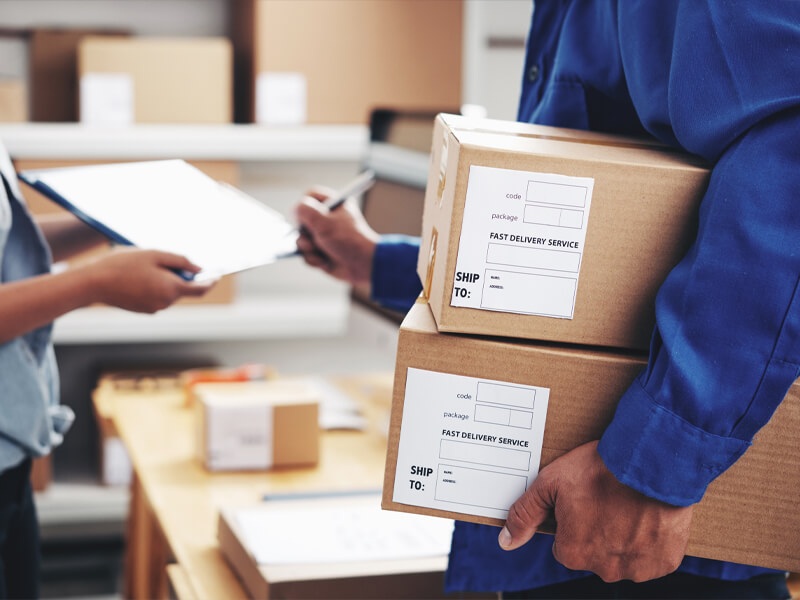Ingenious Industrial Packaging Solutions: Elevating Your Products
Reliable Industrial Recycling Solutions for Sustainable Packaging: A Comprehensive Guide
In today's increasingly environmentally-conscious globe, the demand for lasting product packaging solutions has never been higher. To fulfill this demand, companies across markets are actively looking for reliable commercial recycling services. However, browsing the facility landscape of lasting product packaging can be challenging without an extensive overview. That's where this comprehensive guide on efficient industrial recycling solutions for lasting product packaging comes in. By discovering key locations such as product packaging product choice, designing for recyclability, carrying out recycling facilities, teaming up with reusing companions, and monitoring and measuring recycling success, this overview will equip you with the understanding and tools essential to make informed choices and drive favorable adjustment within your company. Whether you're a product packaging professional, sustainability manager, or simply curious about the topic, this guide will give useful understandings and approaches to assist you navigate the globe of sustainable packaging.
Product Packaging Material Option
The option of product packaging materials plays a critical function in guaranteeing the sustainability of commercial reusing solutions. When it comes to lasting product packaging, the option of materials is essential in lessening environmental influence and making best use of recycling effectiveness. Picking the appropriate products can help decrease waste generation, save sources, and advertise a round economic situation.
One important element to consider in product packaging product choice is recyclability - industrial metal packaging. Products that can be quickly recycled and integrated back into the manufacturing cycle are preferred. Products like cardboard, paper, glass, and specific kinds of plastics can be reused numerous times without shedding their quality. On the other hand, materials that are tough to recycle, such as non-recyclable composites or combined plastics, can develop difficulties for the reusing process and may end up in land fills or incinerators.
Another factor to consider is the use of biodegradable and sustainable materials. Packaging made from renewable energies, such as plant-based plastics or biopolymers, can help in reducing dependence on fossil fuels and minimize climate adjustment. Additionally, biodegradable products damage down naturally gradually, reducing the build-up of waste in landfills.
Moreover, the weight and volume of product packaging products must be minimized to decrease transportation prices and power usage. Lightweight materials not just require fewer resources during manufacturing however also add to reduce carbon exhausts during transport.
Designing for Recyclability
In order to make sure the recyclability of packaging products, thoughtful style is important. Creating for recyclability entails developing product packaging that can be quickly arranged, divided, and refined in recycling facilities. One essential element of designing for recyclability is the option of products. Packaging designers should prioritize using materials that are widely approved for recycling and have established recycling facilities. Products such as glass, light weight aluminum, and particular kinds of plastic, like pet dog and HDPE, are generally recycled and need to be liked over materials that are hard or costly to recycle.
An additional important consideration in developing for recyclability is the removal of unnecessary elements or materials. By reducing the variety of layers, finishings, and added components, packaging can be made easier and simpler to recycle. Additionally, designers need to aim to minimize the usage of combined materials, as they can complicate the recycling procedure.

Implementing Recycling Infrastructure
Efficient implementation of recycling infrastructure is critical for the success of industrial reusing options. Without proper infrastructure in place, the reusing process ends up being ineffective and ineffective, impeding the general objective of sustainable product packaging.
To carry out recycling infrastructure effectively, several key variables require to be considered. First of all, there need to be an efficient collection system that promotes the splitting up and collection of recyclable products. This can include designated recycling containers in public areas, along with partnerships with waste monitoring firms for curbside pick-up and sorting.
Once accumulated, the recyclable materials require to be carried to reusing facilities in a timely fashion. This needs reliable logistics and transportation networks, making sure that the check my source materials reach the suitable centers immediately.
At the reusing facilities, progressed sorting and handling innovations must be in area to divide different sorts of materials properly. This consists of the usage of automated arranging devices, optical scanners, and hand-operated sorting techniques.
In addition, there should be a robust market demand for recycled materials. This can be accomplished with cooperations with makers and sectors that use recycled products in their production processes. Developing a steady market for recycled materials incentivizes the recycling industry and advertises the circular economy.
Teaming Up With Recycling Partners

One trick element of working together with recycling partners is the facility of clear communication networks. It is essential to develop open lines of communication to assist in the exchange of details, updates, and feedback. This permits both celebrations to stay educated regarding the progression of reusing initiatives and deal with any difficulties or concerns that might develop.
In addition, partnership can include joint efforts in carrying out and making reusing programs. Reusing companions can offer beneficial understandings and support in establishing efficient collection systems and identifying one of the most suitable recycling technologies. By working together, services and reusing partners can maximize the reusing process and decrease waste.
In addition, collaboration can extend past the functional aspects of recycling. It can likewise include campaigning for and education efforts. By signing up with forces, companies and reusing companions can raise awareness about the importance of reusing and promote the fostering of sustainable product packaging methods amongst consumers and other stakeholders.
Monitoring and Measuring Recycling Success
To guarantee the effectiveness of industrial reusing services and the success of lasting packaging objectives, it is essential for businesses and their reusing partners to establish a thorough system for monitoring and determining reusing success (industrial packaging solutions). Measuring and tracking reusing success enables services to evaluate the effect of their recycling efforts, identify locations for renovation, and set meaningful targets for future progression
One way to track reusing success is through making use of data collection and analysis tools. By collecting information on the quantity of product packaging waste produced, the percent of waste that is recycled, and the sorts of materials being reused, organizations can acquire valuable insights into their recycling performance. This data can then be examined to determine trends, patterns, and areas of ineffectiveness.
Another important aspect of tracking and measuring reusing success is developing clear and standard metrics. This enables organizations to contrast their efficiency against market see this here benchmarks and track their progression gradually. Metrics such as reusing prices, waste diversion prices, and greenhouse gas emissions can offer a quantitative procedure of a service's recycling success.

Final Thought
In conclusion, applying efficient industrial recycling solutions for lasting product packaging needs cautious consideration of packaging material choice, making for recyclability, implementing reusing framework, teaming up with reusing partners, and monitoring and determining our website reusing success. By incorporating these techniques, companies can add to an extra environmentally-friendly and sustainable strategy to packaging, reducing waste and promoting the round economy.
By exploring key areas such as product packaging material selection, making for recyclability, applying reusing framework, working together with recycling partners, and tracking and gauging reusing success, this overview will certainly equip you with the expertise and devices essential to make educated choices and drive positive modification within your company. Packaging developers must focus on the use of materials that are widely approved for reusing and have actually developed recycling facilities.Cooperation with reusing partners is vital for the successful application of industrial recycling remedies and the accomplishment of sustainable packaging objectives. By joining forces, organizations and recycling partners can increase awareness regarding the value of recycling and promote the fostering of lasting product packaging techniques among consumers and other stakeholders.
By collecting information on the amount of product packaging waste produced, the percent of waste that is reused, and the kinds of products being reused, businesses can acquire useful insights into their recycling efficiency.